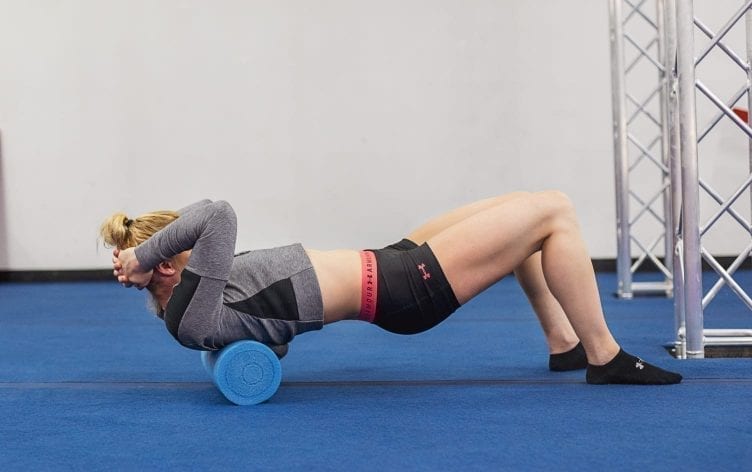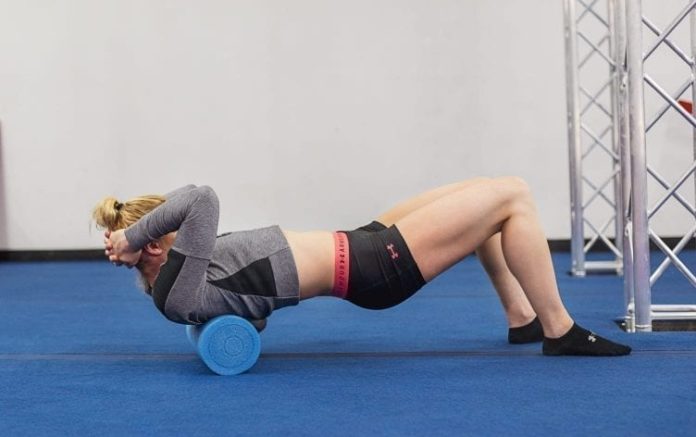
In a magical world, every time you felt sore, you could summon a masseuse who could massage that discomfort out of you on the spot. While life isn’t always that magical, we live in a world full of tools and props to ease our pain. Before you go buying every accessory out there, I’m here to tell you all you need to feel better in your body is a basic, long foam roller.
I foam roll every day, and you should, too. It’s as much a part of my day as brushing my teeth or walking my dog — this essential part of my routine provides me with daily muscle relief, improves my circulation and is often just plain relaxing.
Just like stretching, foam rolling can be integral to injury prevention, increasing blood flow, decreasing soft-tissue density and relaxing tight muscles. It also increases flexibility and can be helpful pre- and post-workout.
Foam rolling can substantially reduce muscle soreness after an intense bout of exercise, which shouldn’t be surprising since runners are some of the tool’s biggest devotees. “I often say, ‘If more runners foam rolled, I’d have a lot less business,” says Adrian M. Carvalho, physical therapist and owner of Golden Gate Physical Therapy.
It can also improve range of motion. “Sports like running, cycling, swimming, tennis and golf require the athlete to do repetitive movements which tighten and shorten muscles and the surrounding fascia. By kneading the muscles and fascia with a roller, it takes pressure off the knee and hip, which allows freedom of movement and reduces the risk of injury.”
WHEN TO FOAM ROLL
If you’re looking to improve your workout performance, opt for rolling pre-workout. It’ll increase mobility and warm up your joints so you’ll be ready to jump into your training. If you’re more interested in preventing soreness, use it as part of your cooldown. Bonus points for doing both. Either way, it’ll help prevent muscle injury if done regularly.
If you’re one of the millions of people slogging away at a computer every day, foam rolling can also help decrease the negative effects sitting can have on your body. “Many of my recreational athletes work on a computer, which slouches them forward and tightens the chest and shoulder region,” Carvalho said. “Lying back on the roller allows the chest to stretch out and helps the mid back increase its mobility.”
WHERE TO FIND FOAM ROLLERS
If you belong to a gym, you’ll find them in the stretching areas. If you want your own, choose the longer roller (usually 36 inches) so you can lay down comfortably on it and have it support your entire back. Rollers with ridges and vibrating features are an added luxury, but you’ll get all the benefits with the more basic version.
If you’re brand new to foam rolling, start slow and don’t do anything that hurts. The principles are similar to stretching — and if you go too hard, you might end up making things worse.
Start by completing at least 30–60 seconds of foam rolling per muscle. Roll the area slowly and focus on tender spots as you hit them. You should feel knots soften and release. In total, you’ll probably be on the roller at least 10 minutes. If you can, doing an extra set of 30–60 seconds on each muscle is a good idea.
If you’re still feeling unsure of where to start, check your local gym for classes dedicated to foam rolling. These types of restorative classes are popping up all over, and you’ll be able to gain some hands-on experience from an expert on how to do it right. If you want more one-on-one attention, seek out a personal trainer at your local gym. They’ll likely be happy to show you the basics.







